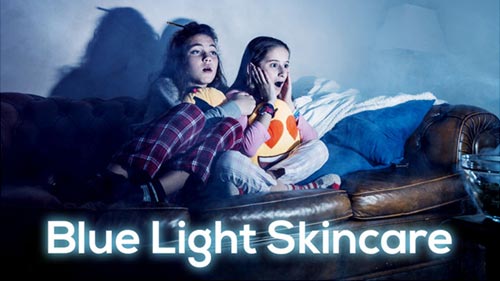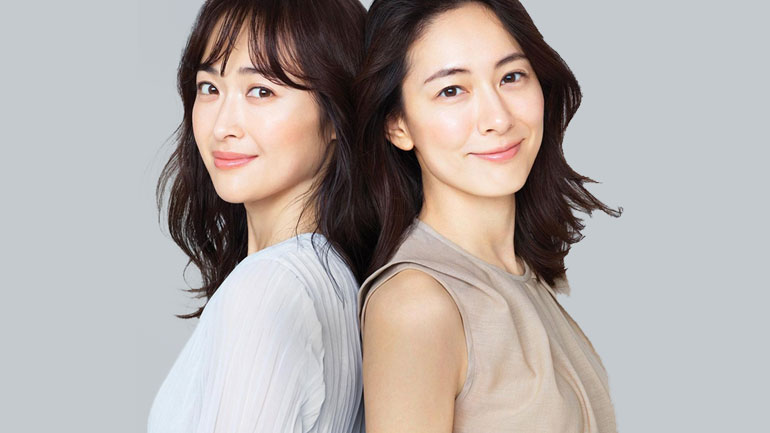
earn what are the different types of acne. Recognizing the types of acne is the first step in comprehending the causes and the treatment of your type of acne. Isolating the area in which different types of pimples occur is also a way to better understand one’s body.
Acne usually affects the face, neck, back, chest, and shoulders, but it can also occur on the arms, legs, or even buttocks. There are different types of acne, and we will go through the symptoms, the causes, and possible treatments for each.
The Different Types of Acne
Blackheads
What are blackheads? They are a symptom of acne, a condition in which the skin’s pores become blocked. Blackheads are formed when the oil and the dead skin cells that are trapped in the pore lining find their way to the pore’s opening. The pores are known as pilosebaceous units – these secrete an oily substance that is known as sebum.
Sebum has the role of protecting the skin, of keeping it hydrated and supple. However, when sebum is overproduced, it forms plugs that are known as comedones. Blackheads are known as open comedones.
The Stages of Blackhead Formation
- The overproduction of sebum
- The excess sebum clusters together with skin cells that we shed every day and obstructs the hair follicle
- The plug is exposed to the air, thus resulting in a waxy substance that is turned black.
Causes of Blackheads
- Hormonal change during puberty – the male sex hormone androgen is responsible for a great secretion of sebum
- Polycystic ovarian syndrome
- Change that occurs during menstrual periods
- Changes that occur during pregnancy
- Changes that occur when taking birth control pills
- Cosmetics
- Cleansers
- Clothing that covers the pores
- Heavy sweating
- High humidity
- Dietary factors
- Certain diseases
- Certain medications
- Steroids
Contrary to popular belief, some factors that are widely believed to be causing blackheads and acne have been found to have no, or little, connection to these conditions.
Poor hygiene has not been linked to blackheads. Excessive washing is likely to aggravate the blackheads. The same goes for chocolate or greasy foods – they do not influence the formation of these open comedones. However, there are links between dairy consumption and diets high in pro-inflammatory foods that can cause blackheads in some people.
Blackheads don’t usually produce symptoms. Skin irritation and pain can be present, but these are usually more present when different types of acne that take more severe forms begin developing. However, these symptoms of blackheads may be experienced:
- Reduced quality of life due to social reasons
- Mild psychosocial effects
- Embarrassment
- Reduced self-esteem
Blackheads do not usually worry individuals enough to seek a doctor’s advice. However, managing these open comedones without proper guidance usually results in inappropriate interventions that may aggravate the condition. After confirming the problem, the doctor could characterize the blackheads as part of different types of acne and determine what type of treatment is needed.
Blackheads Treatment
When having a limited number of open comedones, the problem is classified as mild acne. The doctor will treat the acne, and the blackheads will resolve by itself. Patients must know that treating any type of acne takes time.
People who have blackheads and no additional inflammatory acne lesions can use a cream, a gel, or a wash that contains benzoyl peroxide. These products will break down the plug of sebum and can prevent inflammation.
Prescription treatments are always more effective than over-the-counter medicines that are marketed as being “miraculous” but often fail to meet the needs of consumers. Prescription drugs contain retinoids, benzoyl peroxide, antibiotics, and azelaic acid. These products should be used under a doctor’s guidance, as they may pose a risk of adverse effects.
Oral antibiotics and oral contraceptive pills are often used to treat mild acne. Hormonal agents help reduce sebum production. Skin problems encompass a diverse range, including acne, cellulite, dark spots, psoriasis, rosacea, stretch marks, and dermatitis. These conditions can cause discomfort and affect one’s self-esteem, highlighting the importance of proper skincare and dermatological care.
Whiteheads
Whiteheads are one of the different types of pimples that form when dead skin cells, sebum, and bacteria get clustered within the pores. As opposed to blackheads, which are referred to as open comedones, whiteheads are closed comedones.
They are similar to blackheads, the two falling into the category of non-inflammatory acne, but they appear as small white bumps. Because whiteheads are formed under the surface of the pores, they are not exposed to oxygen. As a result, their color does not darken as it happens in the case of blackheads.
Whiteheads can occur anywhere on the body. Usually, it happens on the face: the nose, chin, and forehead – what is generally known as the T-zone.
Cause of Whiteheads
- Changes during puberty
- Menstruation
- Changes caused by pregnancy
- Menopause
- Genetics
- Birth control pills
- Cosmetics and other skin products
Understanding these causes can help people with whiteheads know what to do to treat and prevent future outbreaks. While birth control pills are usually a way of treating different types of acne, some women will notice increased acne when using this type of birth control. This is because the pills increase the hormone levels, which may affect some women.
Whiteheads Treatment
Whiteheads are a mild form of acne and, thus relatively easier to treat. Just as with blackheads, benzoyl peroxide prescription washes and creams. Additionally, products that contain salicylic acid will break down the existing closed comedones. As always, it takes time for a particular treatment to do its job, even up to eight weeks.
Other solutions include spironolactone, steroid injections, isotretinoin, and whitehead extraction.
LED light therapy
An LED face mask australia is a type of facial mask that uses LED light therapy to treat various skin conditions, such as acne, wrinkles, and pigmentation. One example of an ed face mask. To combat acne, you can decide to try an ed face mask that uses LED light therapy to improve your skin condition.
Inflammatory Acne
Inflammatory acne, or the presence of papules and pustules, is one of the different types of acne that is usually classified as a moderate type.
Papules are a form of acne vulgaris. They appear as bumps on the body, revealing no visible pores as it happens in the case of blackheads. However, they are not whiteheads either. Papules are red, surrounded by inflammation.
Pustules are what we are collectively referring to as pimples. This moderate type of acne presents itself as bumps on the skin with a white or yellow dot in the center. These dots are surrounded by inflammation.
Papules and Pustules Causes
- Propionibacterium acnes – a bacteria that lives in the hair follicles
- The androgen hormone
- The estrogen hormone
- Polycystic ovary syndrome
- Cushing’s syndrome
- Cosmetics
- Certain medicines
- Steroids
Inflammatory Acne Treatment
Acne is not caused by poor hygiene. Washing the face excessively will not resolve the problem. Always seek a doctor’s guidance when dealing with inflammatory acne. Pustules and papules are successfully treated over a fairly long period, and great results may come only after a few months after starting the treatment.
Doctors will most likely prescribe the following common treatments:
- Benzoyl peroxide products
- Salicylic acid products
- Clindamycin and erythromycin lotions or gels
- Retinoids such as tretinoin and isotretinoin
- Oral antibiotics such as erythromycin, oxytetracycline, or doxycycline
- Oral contraceptives
- Oral isotretinoin
- Laser treatment
Cystic Acne
Cystic acne is a condition where the skin pores become blocked, ultimately leading to infection and inflammation. It is the most severe of all different types of acne, and it affects fewer people than other types of pimples. This type of acne is most likely caused by the same Propionibacterium acnes bacteria as regular acne (described just above), but the lesions can be very painful, and there is also a high risk of scarring.
The lesions rupture beneath the skin’s surface and the blockage gets pushed beyond the reach of traditional treatment products. Cysts go deep into the sebaceous gland and layers of the skin. The cysts and nodules do not always look like pimples. Often, they can be seen as big swollen lumps.
If left untreated, this type of acne will lead to scarring most of the time. Scars occur when the cyst is so large that the supporting structure of the skin gets damaged.
Cystic Acne Causes
- Puberty
- Pregnancy
- Polycystic ovary syndrome
- Menstruation
- Perimenopause and menopause
- Genetics
- Internal inflammation
Like almost any acne type, the cystic one is triggered by hormones. The skin’s sebaceous glands become ultrasensitive to the androgen hormone and react by overproducing the oily substance known as sebum. The oil gland becomes engorged and hardened with the excess sebum, thus creating the swollen masses known as cysts or nodules. Once surfacing, these lumps can become highly painful.
Little is known why some people experience this severe form of acne. But it may likely be a sign of an underlying disorder, such as Polycystic ovary syndrome.
Cystic Acne Treatment
When dealing with cystic acne, always see a doctor about it. This severe form of acne cannot be treated with over-the-counter medicines that will have little if any, effect on the swollen lumps.
The dermatologist will most likely recommend one of the following treatments:
- Oral antibiotics to control bacteria
- Birth control pills to regulate the hormones
- Creams, gels, and lotions with retinoids
- Isotretinoin (also known as Accutane) that attacks the causes of acne
- Spironolactone, a hormone blocker
When treating cystic acne, mixing anti-acne skincare products with oral prescription drugs can get it under control. Because of the potential risk of leaving permanent scars, it is crucial for individuals who are suffering from cystic acne to not leave the condition untreated.




